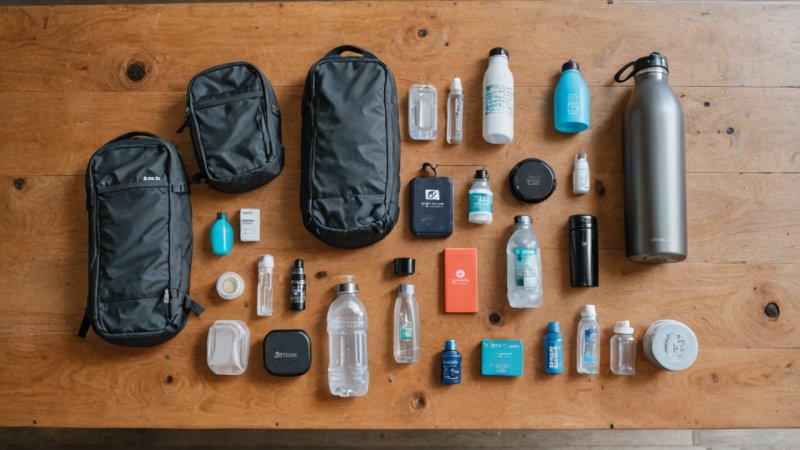In today's world, where environmental concerns are at the forefront of our collective consciousness, choosing eco-friendly travel gear has become more important than ever. As travelers, we are often faced with the dilemma of balancing our love for exploration with our responsibility to protect the planet. The good news is, eco-friendly travel gear not only helps reduce our carbon footprint but can also enhance our travel experience. This article will guide you through the essential aspects of selecting sustainable travel equipment, from understanding materials and brands to incorporating practices that promote eco-consciousness during your adventures.
Understanding Eco-Friendly Materials
When it comes to eco-friendly travel gear, the first step is to understand the materials used in the products you choose. Common sustainable materials include:
- Organic Cotton: Grown without synthetic pesticides and fertilizers, organic cotton is a great choice for clothing and accessories.
- Recycled Polyester: Made from recycled plastic bottles, this material helps reduce waste and is often used in backpacks and travel apparel.
- Bamboo: Naturally renewable and biodegradable, bamboo is an excellent choice for travel utensils and clothing.
- Hemp: Durable and requiring less water to grow, hemp is another sustainable fabric perfect for bags and clothing.
By opting for gear made from these materials, you can make a positive impact on the environment while enjoying your travels.
Choosing Brands with Sustainable Practices
Not all brands are created equal when it comes to sustainability. Look for companies that prioritize eco-friendly practices in their production processes. Here are a few indicators of a brand's commitment to sustainability:
- Transparency: Brands that openly share their sourcing and manufacturing processes are more likely to be genuinely committed to sustainability.
- Certifications: Look for certifications like Fair Trade, Global Organic Textile Standard (GOTS), or the OEKO-TEX label, which indicate adherence to environmentally friendly practices.
- Community Engagement: Companies that invest in local communities or contribute to environmental initiatives tend to have a more sustainable approach.
Researching and supporting brands that align with your eco-friendly values can make a significant impact on your travel gear choices.
Evaluating Durability and Longevity
When selecting travel gear, consider the durability and longevity of the products. High-quality gear may come with a higher upfront cost, but it can save you money in the long run by lasting through multiple trips. Here are some tips:
- Read Reviews: Look for customer feedback on the durability of the products you're considering.
- Test Before You Buy: If possible, try out items in-store to assess their sturdiness and comfort.
- Consider Versatility: Choose items that can serve multiple purposes, such as a backpack that can also be used as a daypack.
Investing in durable travel gear not only reduces waste but also enhances your travel experience, as reliable gear can make your adventures more enjoyable.
Essential Eco-Friendly Travel Gear
Now that you understand the materials, brands, and durability aspects, let’s explore some essential eco-friendly travel gear that can make a difference:
- Reusable Water Bottles: Opt for stainless steel or glass bottles to stay hydrated without contributing to plastic waste.
- Biodegradable Toiletries: Choose eco-friendly soaps, shampoos, and dental products that won't harm the environment.
- Solar-Powered Chargers: Keep your devices charged sustainably with solar-powered chargers that harness renewable energy.
- Eco-Friendly Clothing: Look for clothing made from sustainable materials that are breathable and versatile.
These items not only serve practical purposes but also align with a commitment to sustainability while traveling.
Incorporating Sustainable Practices During Travel
Choosing eco-friendly travel gear is just one part of being a responsible traveler. Here are some practices you can incorporate into your travels:
- Leave No Trace: Always clean up after yourself and respect the environments you explore.
- Support Local Businesses: Opt for local guides, restaurants, and markets to contribute to the community's economy.
- Use Public Transportation: Whenever possible, use public transport or walk to reduce your carbon footprint.
By adopting these practices, you can minimize your impact on the planet and promote sustainability in your travels.
Conclusion
Choosing eco-friendly travel gear is not just about making a single purchase; it’s about fostering a mindset that values sustainability in every aspect of travel. By understanding materials, selecting responsible brands, and opting for durable products, you can enjoy your adventures while protecting the environment. Furthermore, incorporating sustainable practices during your travels enhances the overall experience and contributes to the preservation of the destinations you visit. As you plan your next journey, let eco-consciousness guide your choices, ensuring that your love for exploration aligns with your commitment to a healthier planet.






